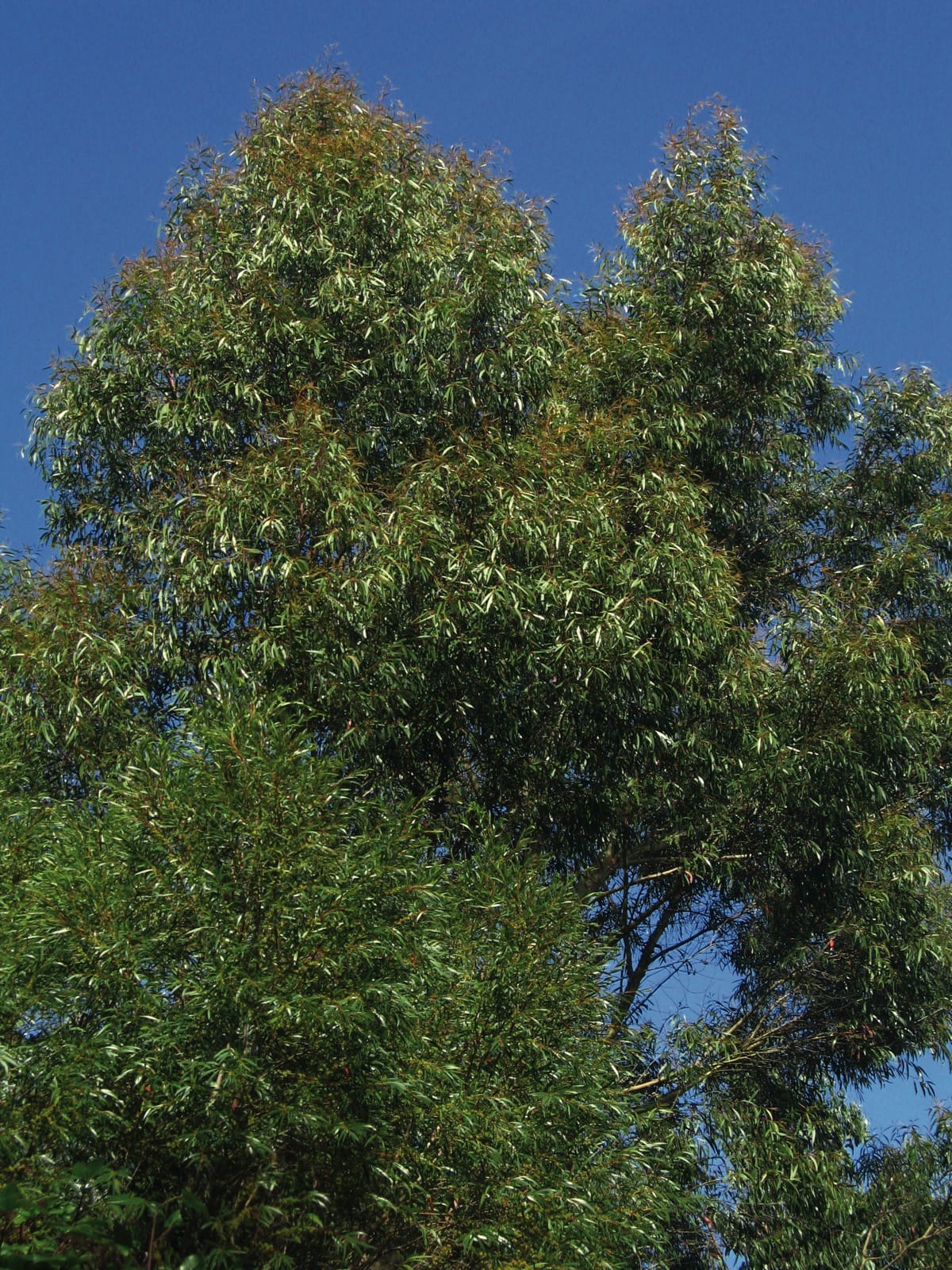Eucalyptus moorei
Credits
Article from New Trees by John Grimshaw & Ross Bayton
Recommended citation
'Eucalyptus moorei' from the website Trees and Shrubs Online (treesandshrubsonline.
Genus
Other taxa in genus
- Eucalyptus acaciiformis
- Eucalyptus albida
- Eucalyptus amygdalina
- Eucalyptus archeri
- Eucalyptus blakelyi
- Eucalyptus bridgesiana
- Eucalyptus brookeriana
- Eucalyptus camaldulensis
- Eucalyptus camphora
- Eucalyptus chapmaniana
- Eucalyptus cinerea
- Eucalyptus coccifera
- Eucalyptus cordata
- Eucalyptus crenulata
- Eucalyptus cypellocarpa
- Eucalyptus dalrympleana
- Eucalyptus delegatensis
- Eucalyptus elliptica
- Eucalyptus fastigata
- Eucalyptus fraxinoides
- Eucalyptus globulus
- Eucalyptus gregsoniana
- Eucalyptus gunnii
- Eucalyptus johnstonii
- Eucalyptus kybeanensis
- Eucalyptus lacrimans
- Eucalyptus laophila
- Eucalyptus leucoxylon
- Eucalyptus macarthurii
- Eucalyptus macrorhyncha
- Eucalyptus mannifera
- Eucalyptus melliodora
- Eucalyptus mitchelliana
- Eucalyptus morrisbyi
- Eucalyptus neglecta
- Eucalyptus nicholii
- Eucalyptus nitens
- Eucalyptus nova-anglica
- Eucalyptus obliqua
- Eucalyptus oreades
- Eucalyptus ovata
- Eucalyptus parvula
- Eucalyptus pauciflora
- Eucalyptus praecox
- Eucalyptus radiata
- Eucalyptus regnans
- Eucalyptus remota
- Eucalyptus risdonii
- Eucalyptus rodwayi
- Eucalyptus rubida
- Eucalyptus saligna
- Eucalyptus sideroxylon
- Eucalyptus stellulata
- Eucalyptus subcrenulata
- Eucalyptus tenuiramis
- Eucalyptus urnigera
- Eucalyptus viminalis
Mallee to 8 m, more rarely a tree to 10 m. Bark smooth and greyish white, shedding in ribbons. Branchlets purplish red. Juvenile leaves opposite to alternate, sessile to petiolate, lanceolate. Adult leaves thick and dull greyish green, 4–7 × 0.5–1.7 cm, lanceolate to narrowly lanceolate, lateral veins indistinct, margins entire, apex acuminate or acute; petiole terete or flattened, 0.2–0.5 cm long. Inflorescences solitary and axillary; umbellasters with (7–)11–15 flowers. Flower buds spindle-shaped; hypanthium 0.1–0.3 cm wide; stamens white or cream. Capsule subglobular, 0.3–0.4 cm diameter; valves three, included. Chippendale 1988. Distribution AUSTRALIA: New South Wales (Gibraltar Range, Blue Mts., Southern Tablelands). Habitat Heathland with sandy soils. USDA Hardiness Zone 8–9. Conservation status Not evaluated. Illustration NT349. Taxonomic note The closely related E. latiuscula (Blakely) L.A.S. Johnson & K.D. Hill has ovate juvenile leaves and umbellasters that are sessile (or almost so). It forms a stouter plant with fewer stems (Johnson & Hill 1990b).
Eucalyptus moorei comes from comparatively high altitudes, giving a promise of cold tolerance that is not completely fulfilled in cultivation. Seedlings show great variation in their hardiness, and even the best cannot be relied upon for long-term survival. Once established in a favourable site, however, it can develop into a good tree. A plantation made in the 1950s by the US Forestry Service in Oregon now has trees up to 10 m (S. Hogan, pers. comm. 2007), and there is a forked tree of about 10 m at Logan (from Hind 6043, accessioned 1991). This has attractive pinkish grey bark, peeling and flaking in shaggy strips from the older parts. The crown is dense, composed of graceful narrow leaves. A slightly mysterious ‘var. nana’ is in cultivation and available from seed companies. This seems to be a particularly short-growing variant, with some merit as a shrub for smaller gardens. A specimen seen at Mount Usher had attractive reddish brown stems.

